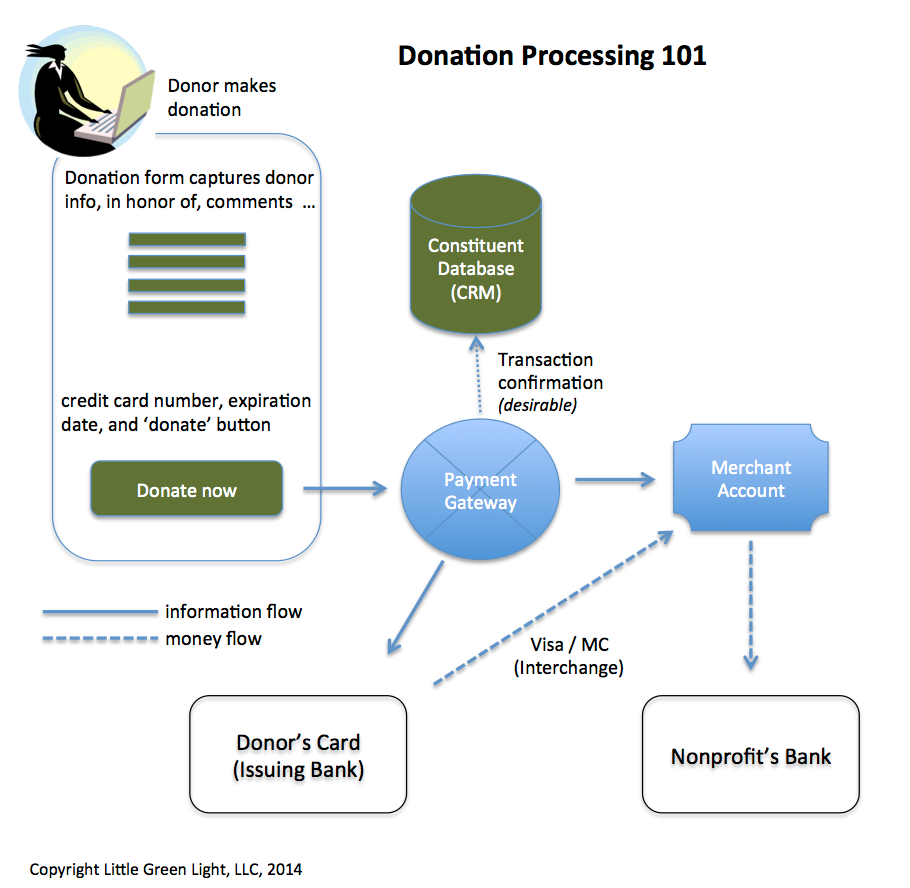Little Green Light is a cloud-based donor management system for fundraisers.
Subscribe to get our latest product updates, best practices and tips to grow your nonprofit.
This article describes at a high level what is needed for a nonprofit to collect online donations. Even with the simplifications I’ve made here, you’ll see that there are a number of pieces to the puzzle.
In the diagram below you’ll see three important building blocks:
– Your Constituent Database or CRM (constituent relationship management database) keeps track of all kinds of details about your donors and donations. This is an indispensible tool for creating reports, acknowledgments, and generally planning your fundraising efforts.
– The Payment Gateway is the virtual credit card terminal and manages all the data flow from the donation button through to the credit card network and to the merchant account. The payment gateway is also responsible for fraud checking. Fees for payment gateways typically consist of a monthly fee and a small fixed amount per transaction.
– The Merchant Account is a specialized bank account for nonprofits (or more generally, merchants), that handles funds from the donor’s credit card company and then deposits the funds into the nonprofit’s bank account. Fees for merchant accounts consist of a transaction fee (a % plus a fixed amount), most of which is dictated by the Interchange fees assessed by the credit card networks (Visa, Mastercard, etc.).
A couple of important processes take place along the way:
Entering of credit card information must be done on an SSL secure webpage (or section of a webpage) and the transmission of the credit card numbers must be handled by a Payment Gateway. In the case of a recurring transaction, some entity needs to keep track of when to charge the credit card on each interval.
There is a near real-time process of authorization that occurs that tells all the parties in the system whether the transaction will be completed or not. On a slower timeline (hours or even a full day), the transaction actually completes and money flows.
In an ideal world, the transaction information will flow automatically into your CRM database when the transaction is completed, and you will also be able to control any emails that get sent automatically to the donor at that same time.

Additional Reading: Here are four excellent resources if you want to learn more about online payments:
1) www.idealware.org/articles/payment_processing_pictures.php
Payment processing in pictures for nonprofits … a must read.
2) www.ippay.com/index.php?q=merchant_processing_overview
How merchant processing works
3) commons.wikimedia.org/wiki/File:Gao-report-on-interchange.gif
Nice simple graphic showing the flow from consumer to merchant and where the fees kick in
4) www.merchantmaverick.com/articles-tips-and-advice/meet-sopranos-introducing-merchant-account-mafia-part/
Comic relief: personifying merchant processing using The Sopranos
Ready to try LGL? Get your first 30 days free. No credit card required.